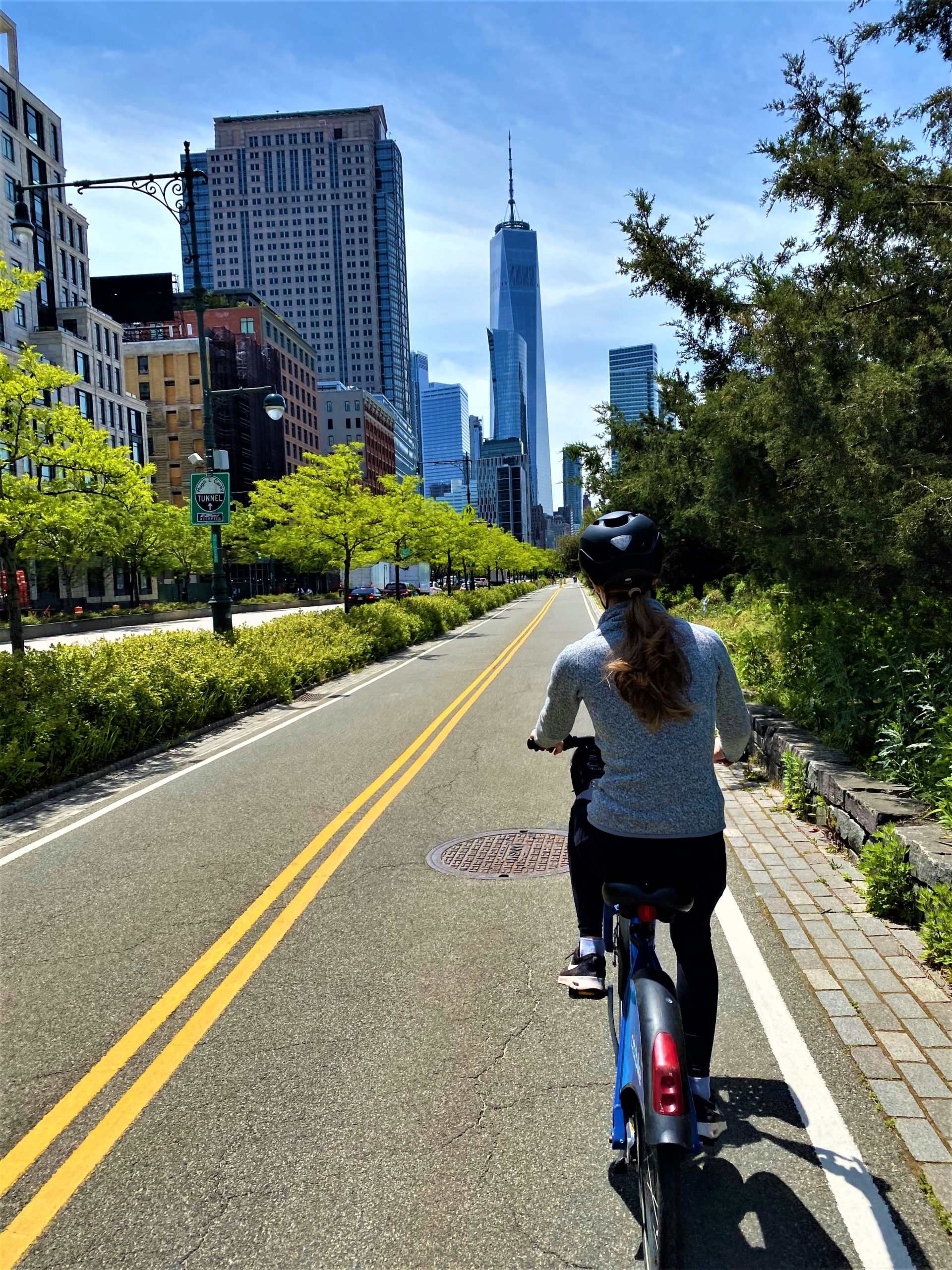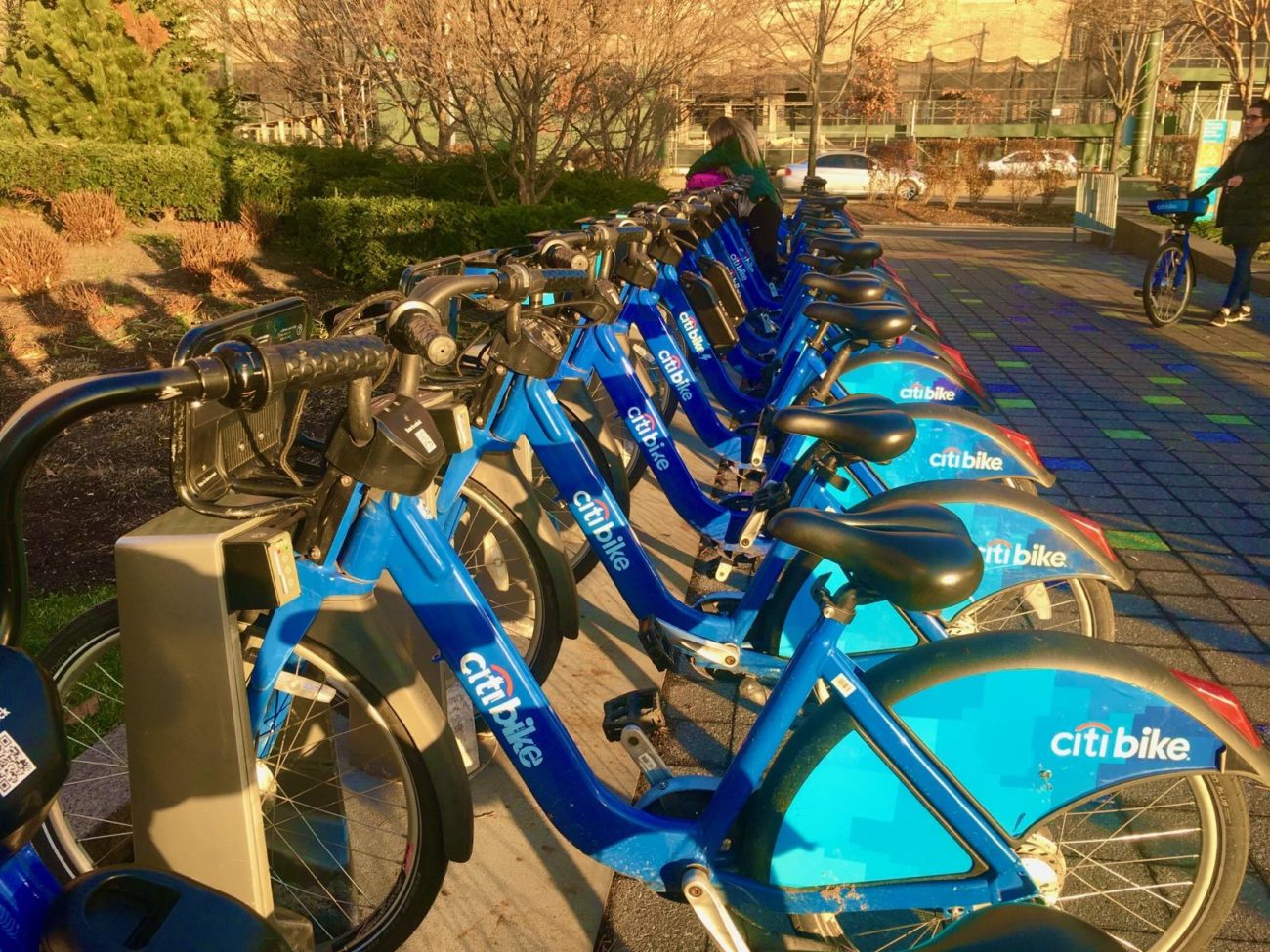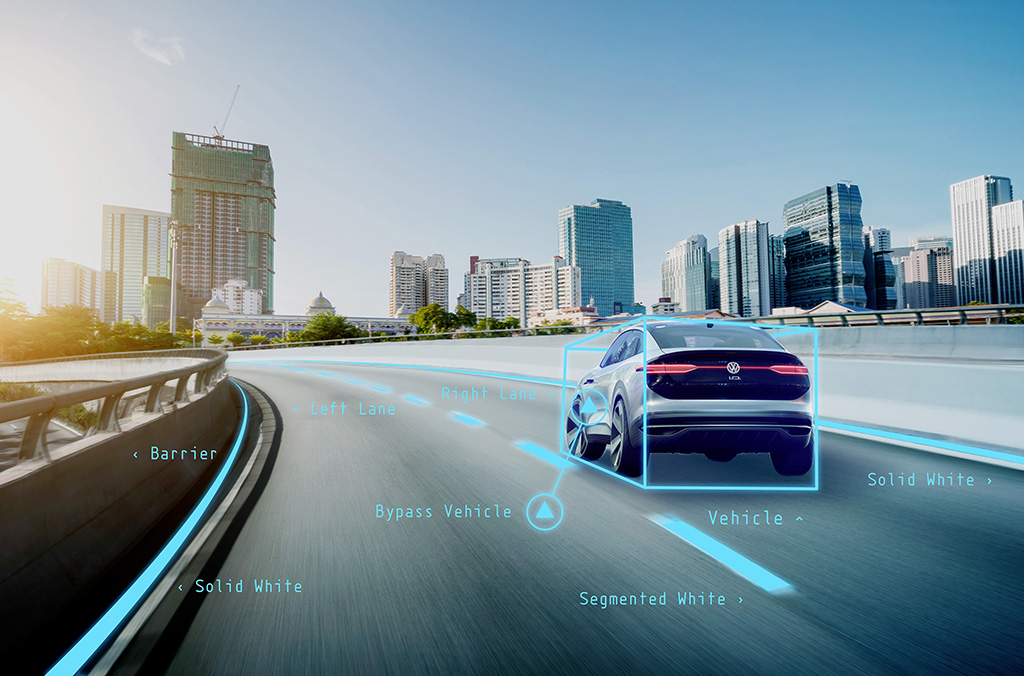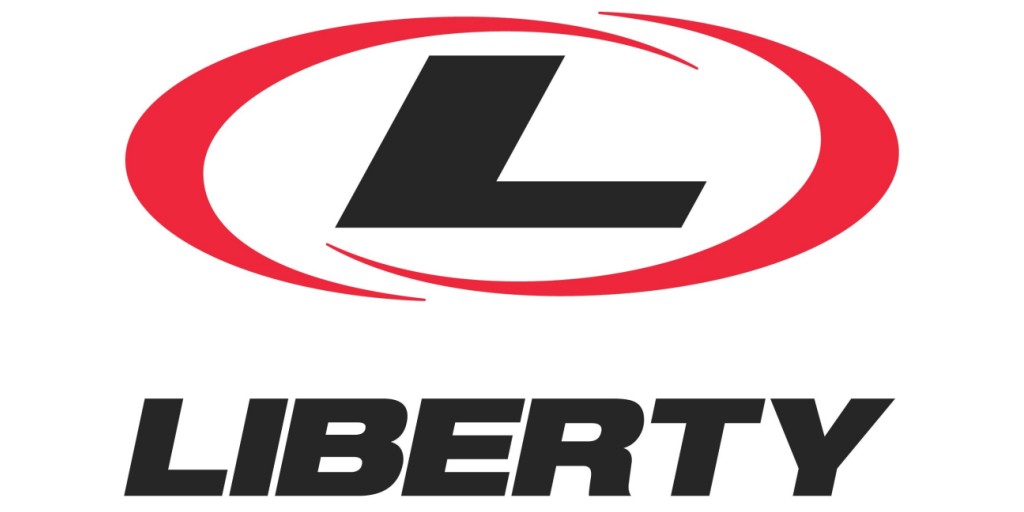
The race to decarbonize the U.S. transportation sector is on. With a historic federal goal in place to eliminate nearly all greenhouse gas emissions from the sector by 2050, interest in clean transportation technologies has skyrocketed. But the nation still faces a pressing question: Which energy-efficient mobility strategies will get us to the finish line in time?
That question was the focus of a two-day workshop hosted by the National Renewable Energy Laboratory (NREL), where thought leaders from industry, government, and academia discussed the challenges — and opportunities — that should be prioritized to create the sustainable transportation systems of the future.
The workshop, titled “Envisioning Tomorrow’s Sustainable Mobility Systems,” asked experts from across the nation to identify the technologies, trends, and solutions that will contribute most to creating sustainable mobility systems: in other words, the most energy-efficient, affordable, equitable, and safe ways of moving people and goods.
“The future of sustainable energy systems will need to be holistic — considering technology components and systems, human behavior, and our overall mobility transitions,” said Jacob Ward, who oversees the Energy Efficient Mobility Systems program within the U.S. Department of Energy (DOE) and delivered the workshop’s keynote address. “We’re not just aiming to create a sustainable end-state decades from now. We’re committed to getting there sustainably, too.”
The workshop convened some of the biggest players in the transportation space, including representatives from DOE and the U.S. Department of Transportation; cities, airports, and transit agencies; and NREL and university researchers. These participants brought challenges, opportunities, and solutions to the table across six major topics to help chart a course for the next phase of mobility systems research.
Read about the six cross-cutting topics below.
Read key takeaways from the Envisioning Tomorrow’s Sustainable Mobility Systems workshop.
Understanding Complex Travel Behaviors
A key component of future mobility systems will be sustainable modes of travel, from electric and autonomous vehicles to e-bikes, e-scooters, and public transit. However, sustainable transportation needs to be at least as convenient and flexible as energy-intensive modes, like driving a private car, to create meaningful impact.
Workshop participants concluded that solutions in this area should be focused on improving the convenience of energy-efficient modes of travel. High-quality light rail, bus rapid transit, carpooling, incorporating e-bikes into transit, and nonmotorized modes of travel are all viable components of lower-emission travel options, but technology solutions are needed to address the pain points of these systems.
For instance, better scheduling can improve public transit efficiency and make it easier for travelers to depart and arrive on time. Travel can also be made more seamless with apps that integrate on-demand travel options, like calling a rideshare vehicle or renting an e-scooter to cover the first and last mile of travel. Participants also discussed the importance of non-monetary incentives in promoting sustainable travel, such as “time buffers”: flexibility in start or end times for employees who use public transit to get to work.
Venu Garikapati, a researcher who leads NREL’s transportation modeling and metrics team and who facilitated discussion on this topic, emphasized that our travel behaviors are attuned to our environments.
“The majority of daily trips in the U.S. are less than three miles,” Garikapati said, referencing a 2021 study from the Bureau of Transportation Statistics. “These kinds of car trips can be replaced with bikes, e-bikes, on-demand and micro-transit, and other energy-efficient forms of travel — but only if the infrastructure allows it.”
Short-term solutions, Garikapati said, include improving our infrastructure to make nonmotorized forms of travel viable. Longer-term solutions may require visionary thinking about land use and built environments in the United States. That might include clustering developments closer to the places people live and rezoning for mixed-use development.
Novel Transit Solutions To Benefit Underserved Communities
Improved transit services have effects that span communities, including better quality of life and cost savings for those who are transit-dependent, as well as significant energy and emissions reductions. But innovation in this area will be as much about institutional innovation — the ability to quickly evolve the business of transit — as it is about innovative mobility technologies.
“There appears to be an opportunity to reimagine transit in our society,” Young said. “Modernized transit systems may be able to compete with the modes people are used to, like driving private cars. They might be able to mitigate the urgent issue all transit agencies face, which is declining ridership. They might even attract a new generation to public transit.
“But,” Young said, “public transit agencies need to leverage emerging technologies, as well as deployment guidance, to get there.”
Solutions in this area, participants concluded, should be community-specific and focused on improving the convenience of transit. Better information-sharing, improved timeliness, technology integrations, exploring employer-provided mobility options, and shifting transit to the areas where it is most needed are all aspects of this work. There is also great potential to harness on-demand ride-hailing technologies for public transit.
However, these efforts are complicated by significant research gaps: among them, a need for data that can help transit agencies quantify the benefits of transit improvements, so they can make business cases for modernized transit systems.
For future mobility systems to serve marginalized communities, it is imperative for researchers to help fill in these research gaps. They can begin by forecasting future demand for on-demand transit; measuring transit effectiveness with tools such as the Mobility Energy Productivity metric; demonstrating how to integrate multimodal travel within transit systems; assessing novel modes with respect to technology, policy, business, and industry maturity; and helping to plan and deploy transit services for rural and disadvantaged communities.
Emerging Trends in Freight
Freight — the movement of goods around the nation and world — creates an outsize share of transportation emissions, largely because the trucks, trains, boats, and planes that move goods are the world’s most fossil-fuel-dependent vehicles. Decarbonizing freight movement could, in turn, create an outsize impact on reducing carbon emissions. Yet the barriers to decarbonizing freight are significant, from negotiating complex logistics to creating buy-in for clean technologies.
That said, old paradigms are beginning to change. Alicia Birky, NREL’s lead analyst for emerging freight technologies, noted that conversations about decarbonizing freight have shifted in recent years from a question of “if” to “when.”
“Attitudes toward battery-electric freight have shifted over the past few years from resistance to a growing acceptance that electrification is the future. And hydrogen technologies are also gaining traction,” Birky said. “But new technologies and operational changes carry risks, especially for smaller operators. We have a real opportunity to help de-risk them.”
Solutions in this space, participants emphasized, should focus on addressing a pressing concern among operators: a perceived gap between federal clean energy goals and the readiness of technology and infrastructure to support decarbonized freight operations. Researchers should work to identify how new data streams, like data from electronic logging devices mandated for all cargo carriers, can help enable better insights and technology solutions.
Equity considerations, too, cannot be overlooked. These concerns include making sure that rural and disadvantaged communities have equitable access to goods, that freight operations do not disproportionately affect disadvantaged neighborhoods, and that workers have access to freight-related jobs.
Cutting-Edge Operations Concepts
Automated vehicles have the potential to create significant energy savings, especially when electrified. But as vehicles become smarter, “intelligent” infrastructure is also needed — such as traffic signals that are equipped with sensors and cameras and thus capable of regulating traffic flows. These kinds of technologies can help vehicles and vulnerable road users travel safely, use less energy, and reduce congestion. They will be especially important as growing numbers of autonomous vehicles hit the roads.
“Infrastructure needs to become at least as intelligent as the vehicles that interact with it,” said NREL’s Stan Young, an advanced transportation and urban scientist who led the discussion on the topic. “It’s the primary means to extend benefits to vulnerable road users like pedestrians, cyclists, and vehicles that are not connected or automated.”
Greater data-sharing will be critical to support the deployment of these emerging technologies, which include advanced traffic control at intersections, automated valet parking service integrated with automated electric charging, and other methods of connecting cars to their environments. However, deploying these solutions in the real world can be challenging due to workforce training issues and funding — not to mention the breakneck pace of technology development, which can cause sensors to become outdated soon after they are installed.
In response to these challenges, participants called on infrastructure owner-operators to widely share the data gathered and lessons learned from early deployments — even deployments that may not fully succeed in their objectives. Pressing for open data protocols and frameworks, they emphasized, will allow others to build upon these deployments, ultimately helping to evolve toward national standards for intelligent infrastructure.
In the near term, participants agreed that solutions should focus on “low-hanging fruit”: applications that can be implemented in existing controller hardware and software. Long-term solutions should consider how to support intelligent infrastructure over the coming years and decades and support safety-critical applications such as safety-affirmative signaling. Strategies should include workforce training for new systems, securing sustained funding, lowering overall system costs, and establishing service agreements for third-party maintenance and repairs.
Ground Mobility at Airports
Airports are at the forefront of innovation in the transportation sector. Their size, rapid growth, and significant employee base cause them to essentially function as small cities. And they serve more than just passengers: They are also responsible for ensuring employees, rideshare drivers, and transit and cargo operators can navigate their facilities. Because of their size and the complexity of their needs, the solutions emerging to move people to and through airports could have significant energy benefits.
Many energy-saving emerging technologies in the ground mobility space are either close to deployment or already in use, from mobile charging robots that can travel to parked electric cars to autonomous, trackless “people movers.” Now, participants noted, airports could be well served by decision-making support to determine which ground mobility technologies to adopt and how to deploy them. As they look to electrification and autonomous technologies to reduce their energy use and emissions, participants voiced strong support for a nationwide consortium of airport representatives paired with expert advisors that can help to de-risk deployment and accelerate innovation.
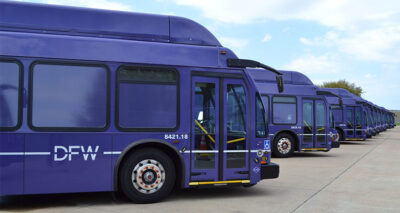
A new modeling framework may help Dallas Fort Worth International Airport — and others in the future — design electric bus deployment strategies. Photo from DFW Airport.
Duvall, who specializes in transportation behaviors, noted that ground mobility solutions hinge on a human element: namely, whether people will adopt new solutions. While many airports see autonomous vehicle technologies as scalable and cost-effective solutions to moving passengers and employees around their facilities, they will need strong communication and information-sharing methods to support consumer adoption. Investing in these systems will be critical, as participants agreed that any energy and emissions reductions at airports will need to simultaneously improve customer experiences, including for passengers with reduced mobility.
Research and Real-World Deployment
“There are many people focused on finding and accelerating sustainable mobility solutions,” Young said. “We share an impatience to deploy innovations that will positively impact society.”
But, he continued, there is a real challenge in this work: The market has little to no tolerance for perceived failure of emerging technologies. Deploying too quickly, before a product has been thoroughly de-risked, can sour perceptions of advanced mobility solutions.
To walk the fine line between rapid deployment and stringent de-risking, participants called for clear, shared language to quantify the maturity of clean energy innovations. This assessment tool — an expanded version of a technology readiness scale — must address not only technology maturity, but also the readiness of associated policies and industries. It would allow innovators to better describe technology maturity to local audiences. It could also help to define what “success” looks like for emerging technologies and ensure that the market — and the public — is ready for these solutions.
Participants also called for researchers, industry partners, and technology deployers to convene on neutral ground and share best practices, risk mitigation strategies, and deployment guidance. Young proposed creating spaces where communities and operators seeking clean energy advancements can voice their challenges and be paired with researchers and industry partners working toward solutions — also known as “reverse pitch” sessions.
Moreover, participants called for stronger, clearer communication from research firms and national laboratories. While peer-reviewed publications ensure that researchers’ conclusions are technically sound, they should be accompanied by communications for the public — including one-page summaries, fact sheets, videos, and social media content. These distilled communications can be used to make business cases, educate communities, spread awareness of emerging technologies, and point policymakers to actionable solutions.

NREL will continue to be called upon to produce new solutions, methods, and metrics in the sustainable mobility space. Photo by Werner Slocum, NREL
NREL’s Role in the Future of Sustainable Transportation Systems
NREL and DOE have parts to play in all this work. DOE can support research and deployment efforts through funding for emerging technologies. They can also facilitate partnerships between communities seeking solutions and the researchers and industry partners seeking to provide them.
In turn, NREL has a role to play as a key innovator. In every session covered at the workshop, participants noted that NREL should leverage its role as a trusted, objective, third-party advisor and assessor to support pilot projects, technology demonstrations, the convening of stakeholders, and data aggregation.
And as the race to sustainable transportation continues, NREL will only continue to be called upon to produce new solutions, methods, and metrics in the sustainable mobility space.
Learn more about NREL’s sustainable transportation and mobility research and its specific focus on sustainable mobility systems. And sign up for NREL’s quarterly transportation and mobility research newsletter, Sustainable Mobility Matters, to get the latest news.
By Anna Squires | Courtesy of NREL.
I don’t like paywalls. You don’t like paywalls. Who likes paywalls? Here at CleanTechnica, we implemented a limited paywall for a while, but it always felt wrong — and it was always tough to decide what we should put behind there. In theory, your most exclusive and best content goes behind a paywall. But then fewer people read it! We just don’t like paywalls, and so we’ve decided to ditch ours. Unfortunately, the media business is still a tough, cut-throat business with tiny margins. It’s a never-ending Olympic challenge to stay above water or even perhaps — gasp — grow. So …

